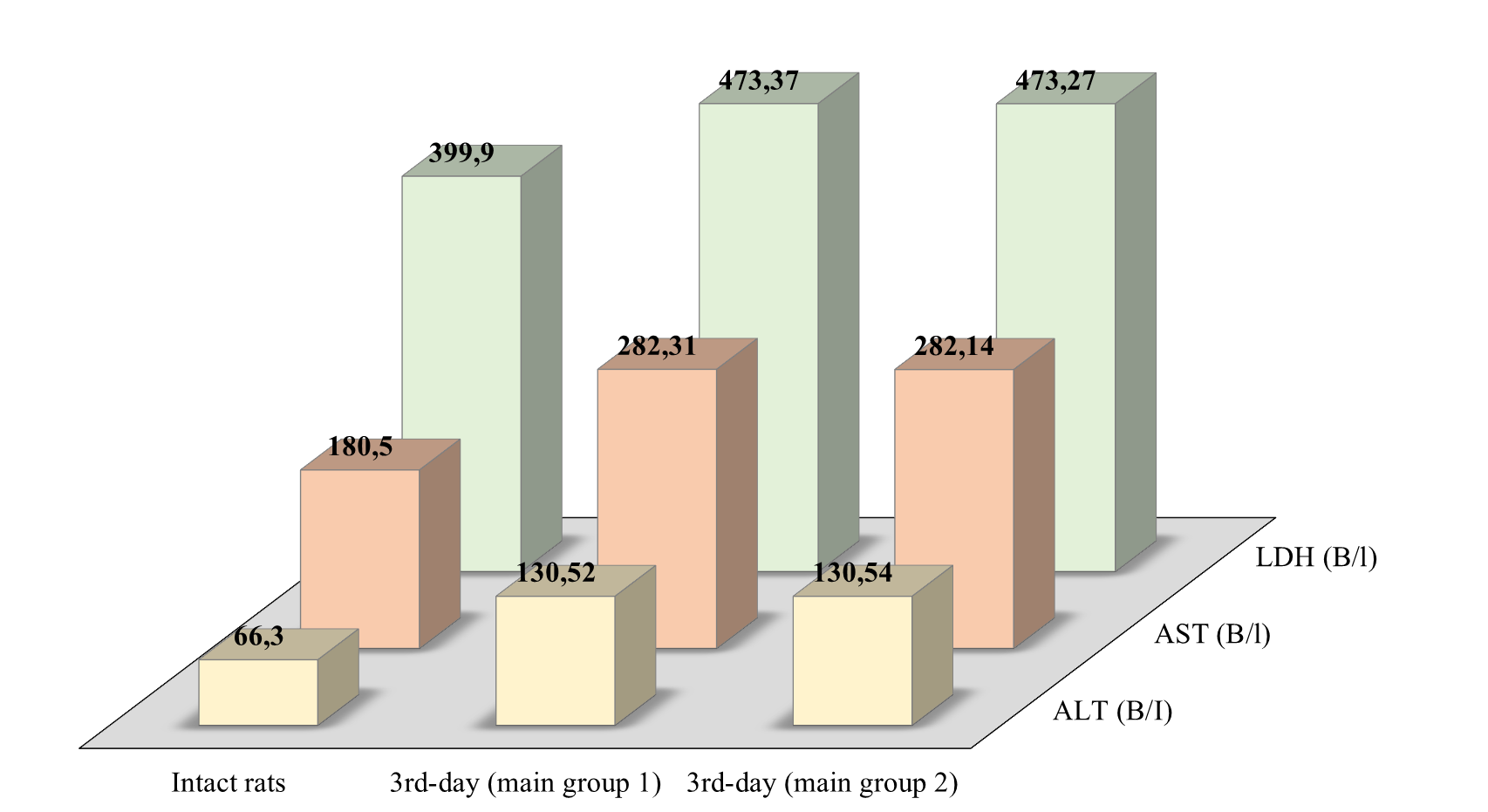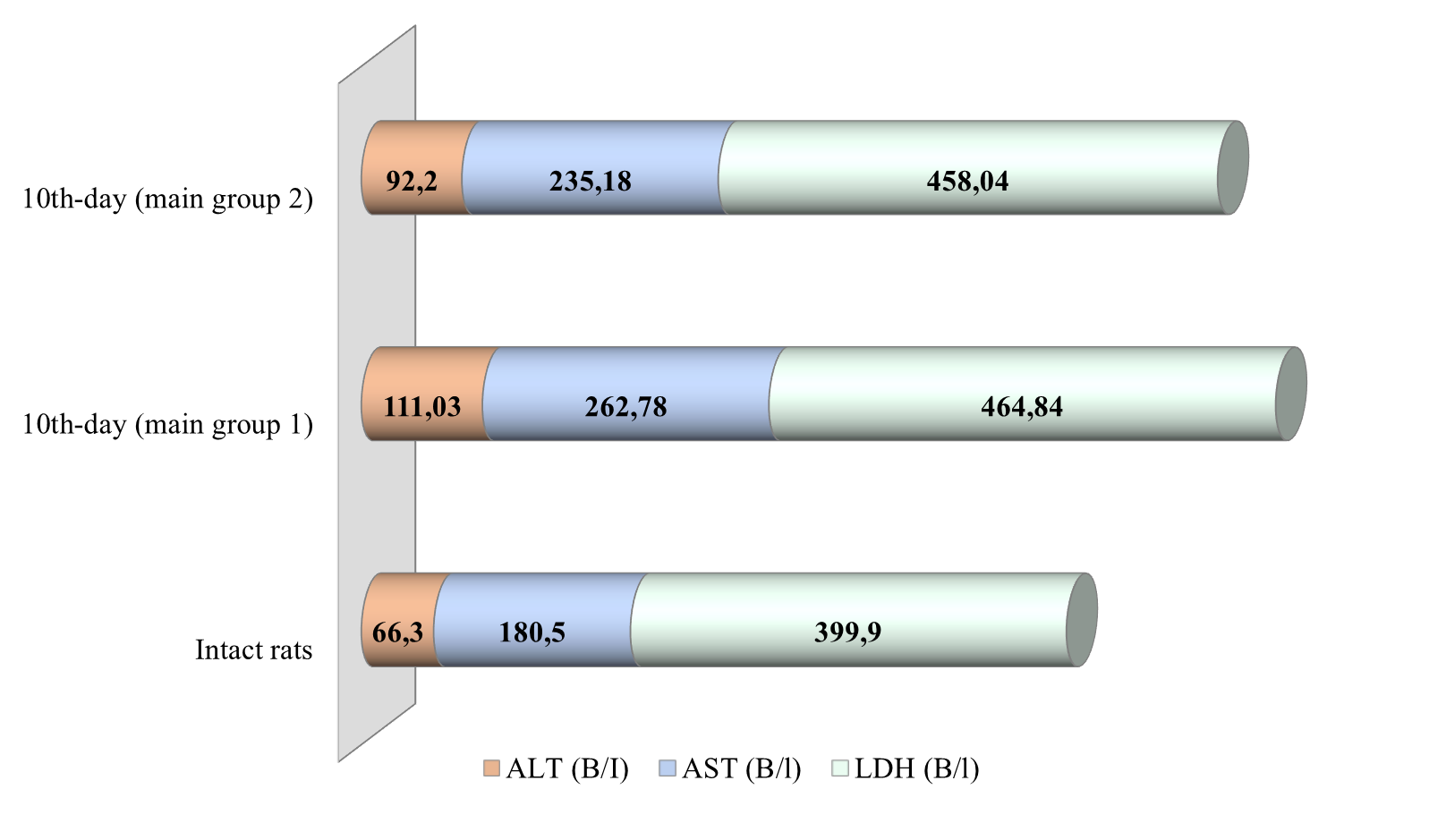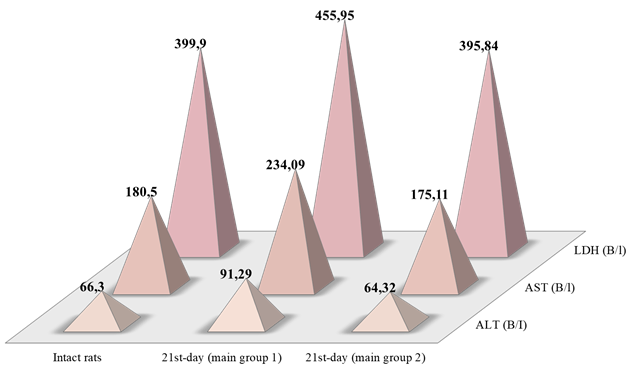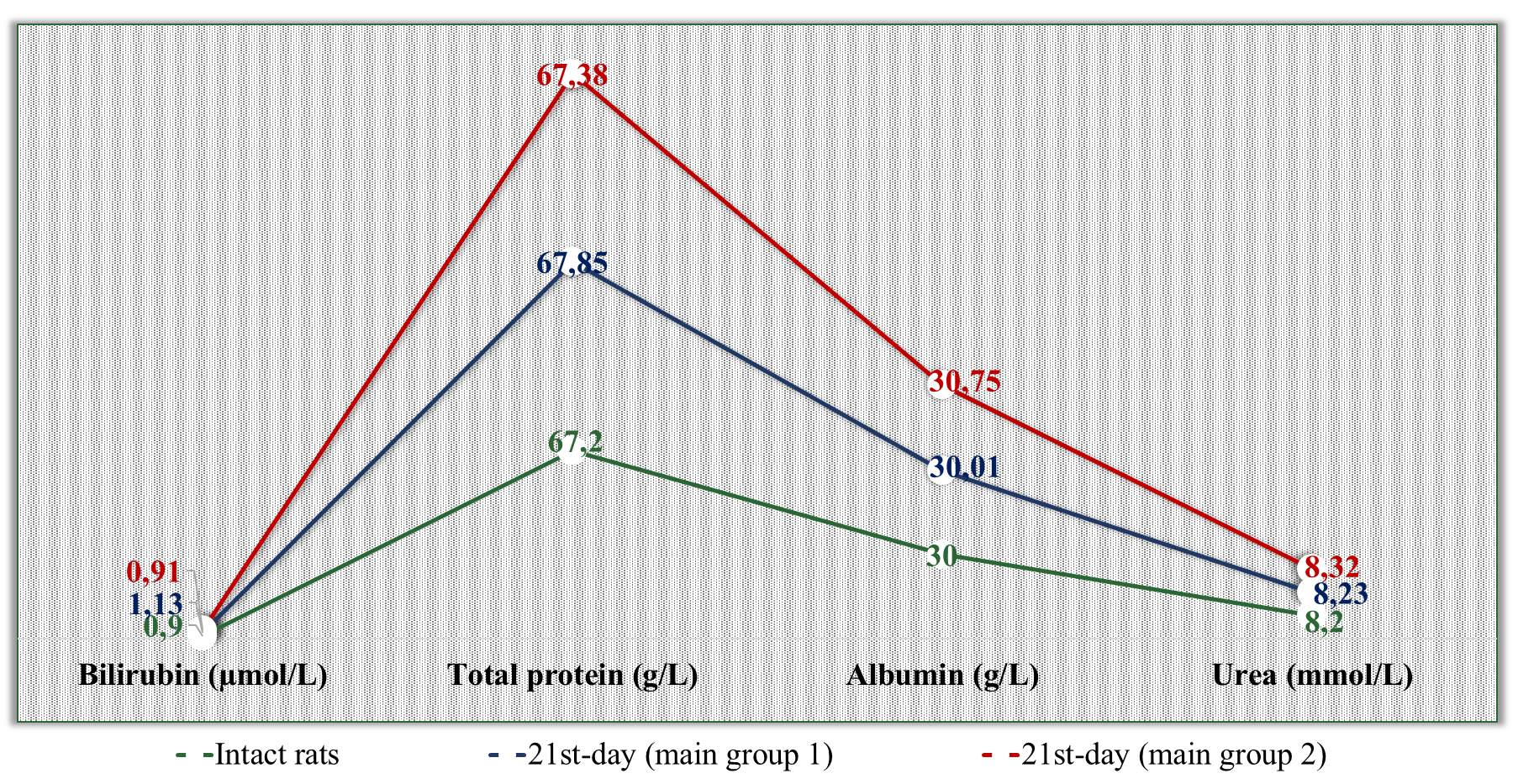-
Paper Information
- Next Paper
- Previous Paper
- Paper Submission
-
Journal Information
- About This Journal
- Editorial Board
- Current Issue
- Archive
- Author Guidelines
- Contact Us
American Journal of Medicine and Medical Sciences
p-ISSN: 2165-901X e-ISSN: 2165-9036
2025; 15(6): 1653-1657
doi:10.5923/j.ajmms.20251506.04
Received: May 6, 2025; Accepted: May 25, 2025; Published: Jun. 5, 2025

The Effect of the "Phytolyver" Agent on the Biochemical Indicators of Blood Serum in White-Breed Rats
Oblokulova Sayyora Abdurashit qizi, Obloqulov Abdurashid Raximovich
Bukhara State Medical Institute named after Abu Ali ibn Sino, Bukhara, Uzbekistan
Correspondence to: Obloqulov Abdurashid Raximovich, Bukhara State Medical Institute named after Abu Ali ibn Sino, Bukhara, Uzbekistan.
| Email: |  |
Copyright © 2025 The Author(s). Published by Scientific & Academic Publishing.
This work is licensed under the Creative Commons Attribution International License (CC BY).
http://creativecommons.org/licenses/by/4.0/

Phytopreparation effect of Phytolyver (asparagus+mackerel sano) in white-breed bats the dynamics of cytolytic syndrome indicators (ALT, AST, and LDG) that occur after morphological changes in the liver following an expressive spinal cord injury have been studied. As a result of the study, the effect of this drug on liver biochemical drugs has been scientifically substantiated.
Keywords: Spinal cord injury, Purebred rats, Phytolyver, Liver, Biochemical indicators
Cite this paper: Oblokulova Sayyora Abdurashit qizi, Obloqulov Abdurashid Raximovich, The Effect of the "Phytolyver" Agent on the Biochemical Indicators of Blood Serum in White-Breed Rats, American Journal of Medicine and Medical Sciences, Vol. 15 No. 6, 2025, pp. 1653-1657. doi: 10.5923/j.ajmms.20251506.04.
1. Introduction
- According to who, between 250,000 and 500,000 people worldwide receive spinal cord injuries each year, and more than 15 million people worldwide live with spinal cord injury (OMSH) [who, 2024]. The main causes of omsh traffic accidents (38%), falls (22.2%), sports injuries and accidents (22.5%) are counted [1]. The clinical picture of omsh is characterized by a deficit of movement activity, impaired sensory and vegetative functions, neuropathic pain. The pathogenesis of Spinal trauma is usually aggravated by a poor prognosis associated with the development of paralysis. In addition, some diseases pose a risk of spinal cord injury can release or increase [2]. OMSH causes patients to develop steatosis liver disease associated with impaired liver function and metabolic dysfunction [3]. Experimental models also show acute and chronic liver changes that can affect recovery from Omsh [4,5,6,7].Lichterman L.B. and according to the data of hammuallifs (2019), a severe cranium volumetric blood in the sinusoids due to the arterialization of the liver circulation of the wound it is accompanied by an increase in circulation [8]. Hajduc E et al. (2021) observed a late increase in serum ALT levels after acute spinal cord injury in their study [9]. Teshaev SH.J., Olimova A.Z. According to data received (2022), an experiment in cranial injury compared with a control group in rat liver found an increase in all structural indicators in the first week [10]. At the same time, functional-metabolic and biochemical indicators of the liver in various diseases and venerations were studied by a group of scientists [11,12], but traumatic morphofunctional changes in the liver in spinal cord injury, including immunogystochemistry changes in properties have not been studied until now. The information cited above is specific to rat liver in spinal cord injury to carry out morphological and biochemical examination and at different periods of injury encourages learning. At the same time for correction in order to reduce pathological conditions the effectiveness of folk remedies is dictated by calamity.The purpose of the study. Study of the effect of phytopreparation "Phytolyver" on the biochemical indicators of the liver, which occurs after a spinal stroke. Material and methods. Controlled White-breed bats were split into two groups, with rats in the main Guruh (n=50) being ordered with neurotropic agents as well as phytopreparation "Phytolyver" (asparagus+Makkai sano), while control group white-breed bats (n=50) were ordered with neurotropic agents only. Biochemical indicators of blood (total bilirubin, Alt, ast, LDG, protein and albumin) were determined using the MINDRAY vs – 30 (China) automatic biochemical analyzer. The results obtained were compared with biochemical indicators obtained from intact rat Bloodstock.
2. Results
- Controlled White-breed rats were studied for Serum bioavailability medication intake and post-injury (Day 3, day 10 and day 21). When variations in cytolytic syndrome indicators were studied in white-breed rats, white rats without an inctant breed averaged 66.3±2.6 [60.5-70.2] B/L in blood serum, ast averaged 180.5±8.9 [159.2-190.5] B/L, and LDG averaged 399.9±7.2 [379.3-408.9] b/l. Controlled White-breed bats split into two groups, with Major Group 1 (n=50) rats being prescribed neurotrophic agents, while major group 2 white-breed bats (n=50) were ordered with neurotrophic agents as well as "Phytolyver" (asparagus+Makkai sano) BFQ. On the 3rd day of expression, the 1st main group of rats reported an average of 130.52±7.17 [120.1 - 140.9] B/L in serum Alt, AST an average of 282.31±3.02 [277.1-286.9] B/l, and LDG an average of 473.37±3.68 [469.11-480.8] B/L, along with bulsa, neurotrophic agents". on 3 days of expression in white non-breeding rats in the 2nd main group (N=50), where phytopreparation" phytolyver " (asparagus+mackai Sano) is prescribed, the main group of rats in blood serum ALT averages 130.54±7.19 [120.15 - 140.18] b/l, ast averages 282.14±3.01 [277.1-286.18] B/L, while LDG averages 473.27±3.79 [469.7-480.9] b/l was recorded (figure 1).
 | Figure 1. Changes in cytolytic syndrome indicators on the 3rd day of injury in experimental in white outbred rats |
 | Figure 2. Changes in biochemical indicators on the 3rd day of injury in experimental white outbred rats |
 | Figure 3. Changes in biochemical indicators on the 10th day of treatment in experimental white outbred rats |
 | Figure 4. Changes in cytolytic syndrome indicators on the 10th day of treatment in experimental in white outbred rats |
 | Figure 5. Changes in cytolytic syndrome indicators on the 21st day of treatment in experimental in white outbred rats |
 | Figure 6. Changes in biochemical indicators on the 21st day of treatment in experimental white outbred rats |
3. Conclusions
- Thus, the phytopreparation of "Phytolyver" led to normalization by relatively diligently reducing the control group rats of cytolytic syndrome indicators (Alt, ast and LDG), which occurred after morphological changes in the liver after organ damage.
 Abstract
Abstract Reference
Reference Full-Text PDF
Full-Text PDF Full-text HTML
Full-text HTML